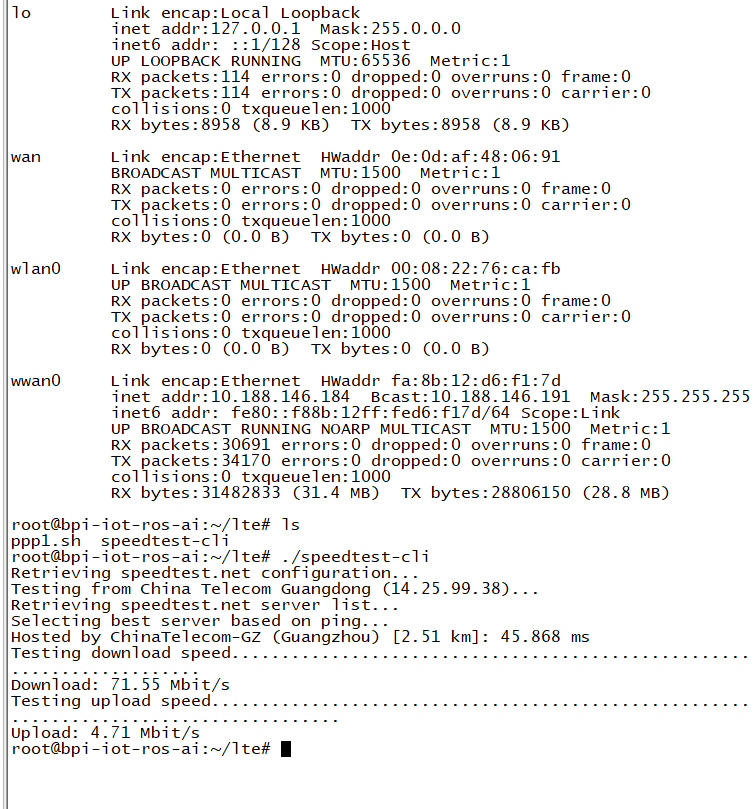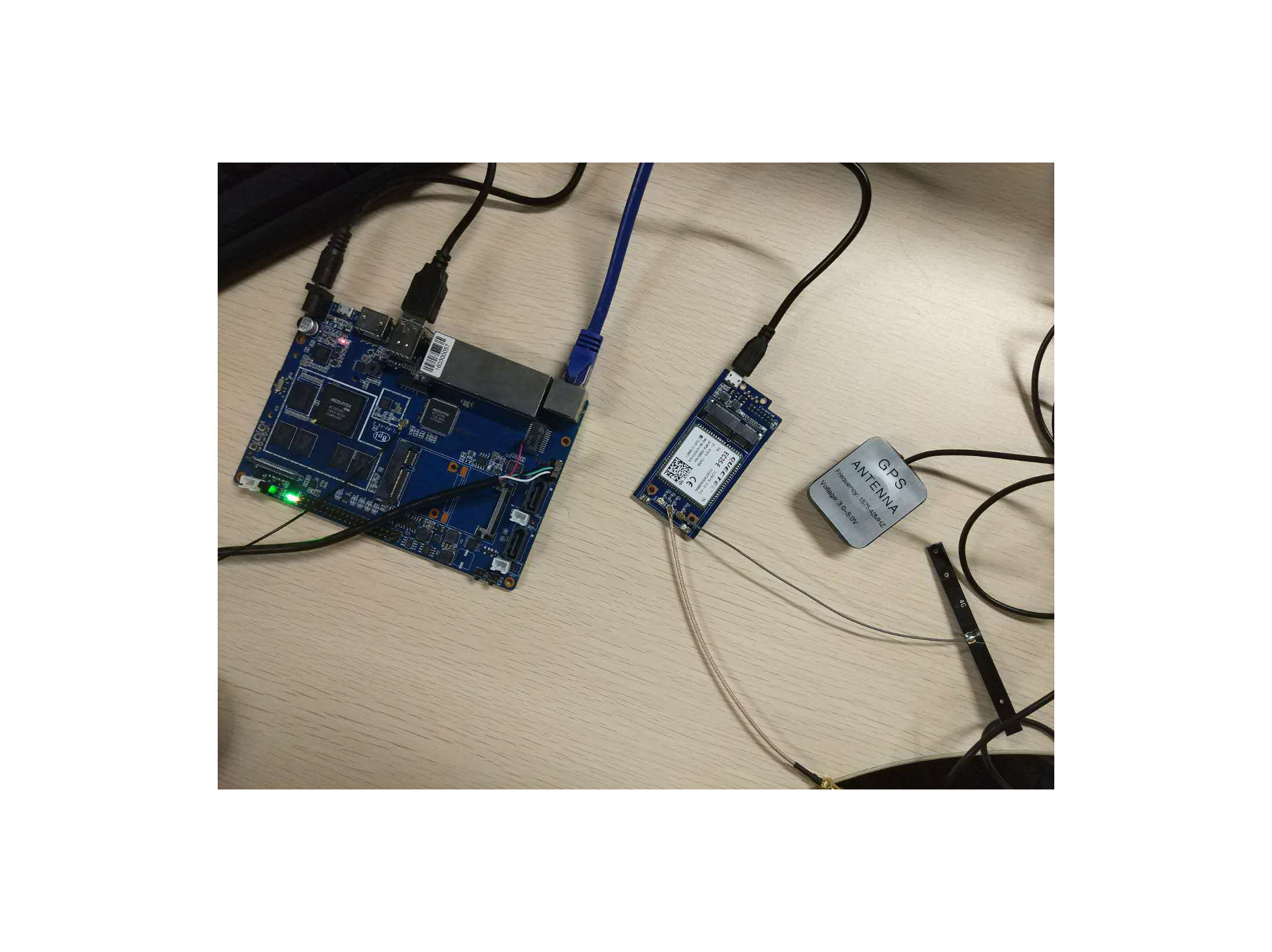
1.Firstly, use R2 connects LTE module by USB or 14pin Headers. then execute command "lsusb" to have a look if R2 have drove the module. The red box is the id of 4G module.

After seeing this, execute command "ls /dev/ttyUSB*" to make sure the 4G module have been recognised as USB devs.

2. Execute the "./ppp1.sh &"

then execute command “ifconfig -a”,you will see ppp0

3. Execute command ”wget -O speedtest-cli https://raw.githubusercontent.com/sivel/speedtest-cli/master/speedtest.py” to download speed test tool.

4. Execute command "chmod +x speedtest-cli", then execute "./speedtest-cli"
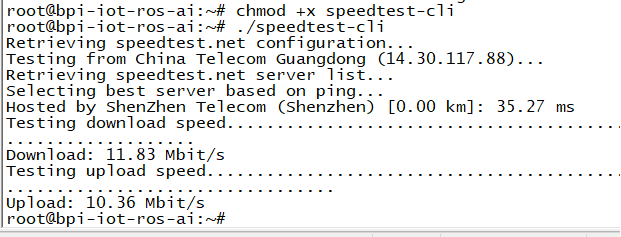
ppp1_success_log.txt (5.7 KB)
1.FAQ
(1) You could get ppp1.sh from here : https://pan.baidu.com/s/1yu0nTNQKPNPzprVPjhOPUA
(2) Q: What should I do, if you meet this "expect (OK)
^M
alarm
Failed "
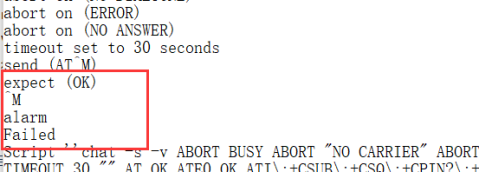
A:The root cause is the Modem.service has used the module usbserial, so the 4G module can’t use usbserial; we can solve the problem by using command "systemctl disable ModemManager.service " or "systemctl stop ModemManager.service "
(3) Q:How to test the communication between SIM card and 4G module?
A:Use minicom, ”minicom -D /dev/ttyUSB2”,and then use AT commands to test, such as ”at”,”at+csq”,“at+ccid”,if you get response without error,that means the communication is OK.
(4) Q: How to install libqmi?
A: Download from here: http://www.linuxfromscratch.org/blfs/view/cvs/general/libqmi.html ; then make and make install.
If you meet this:

you need to install libgudev-1.0-dev, then make and make install again.
(5) Q:How to use qmi-wwan?
A:There is a very easy way to use,I’ve put quectel-CM in home path of root,just execute “./quectel-CM &”,then execute “dhclient wwan0”,now you have finished the configurations.
(6) Q:How to use GPS?
A:BPI-4G module supports GPS and BeiDou,execute “minicom -D /dev/ttyUSB2”,then input AT commands like this:

if you want to use BeiDou,just input AT commands like this:

(7) Here are kernel configurations and driver patch for kernel 4.14.
config (120.3 KB) patch (6.6 KB)
(8) Support areas:
-
EC25-E support: EMEA/Thailand/India/South Korea
-
EC25-AU support: Australia
-
EC25-V/-A support:North America
(9) Openwrt Supported:
A. Clone the source code from this link : BPI-R2 OpenWrt(LEDE) Souce code : 2018-04-11
B. Add qmi-wwan driver to this project :
-
Execute “./scripts/feeds/ install minicom” to install minicom to openwrt project
-
Execute “./scripts/feeds/ install python” to install python to openwrt project
-
Execute “make menuconfig”
-
Add minicom “Utilities —> Terminal —> minicom”
-
Add python “Languages —> Python”
-
Add driver “Network —> wwan …Genetic OpenWrt 3G/4G proto handler”
-
Add "Kernel modules —> USB Support —>
kmod-usb-core
kmod-usb-net —> kmod-usb-net-qmi-wwan
kmod-usb-ohci
kmod-usb-serial —> kmod-usb-serial-option , kmod-usb-serial-wwan
kmod-usb-uhci
kmod-usb2-*
-
Use these source files to replace your openwrt project source files (“build_dir/target-arm_cortex-a7+neon-vfpv4_musl_eabi/linux-mediatek_32/linux-4.9.44/drivers/usb(or net)/…”) :

C. Image & Stuff Link :
-
Baidu Drive : https://pan.baidu.com/s/1e6bvsznfFW3PuaONz0OR1Q
-
Google Drive : https://drive.google.com/file/d/1Zjj0TiZOFGlmAGmRmErqnwdSosUrLUPZ/view?usp=sharing
D. Cross-Compile quectel-CM
-
Copy “quectel-CM” to Linux host PC,and change “Makefile” under the “quectel-CM”,change tools like this:
The tools are under openwrt project,you can find them according to the following picture.
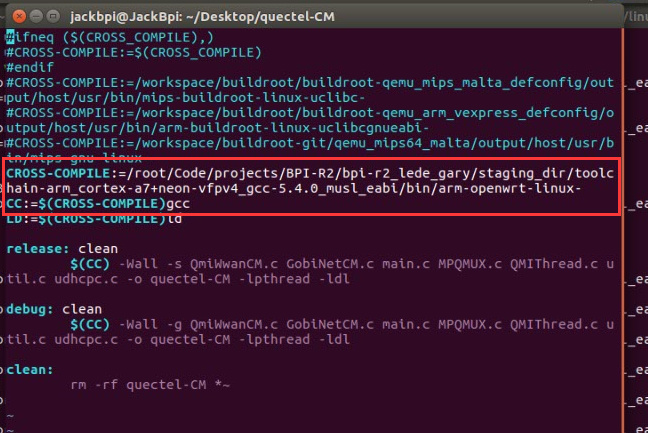
-
If ping Domain name fail,add “nameserver 8.8.8.8” to /etc/resolv.conf

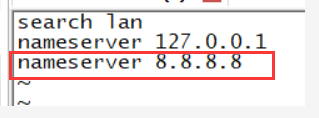
(10) If you use mPCIE interface 4G module to connect R2 by 14 pin header,use these cmds to enable 4G module,after you did these steps,USB0 port will be disable.
- cd /sys/class/gpio/
- echo 266 > export 【# 266(gpio_offset) = 232(base) + 34(GPIO_34)】
- cd gpio266/
- echo out > direction
- echo 1 > value












